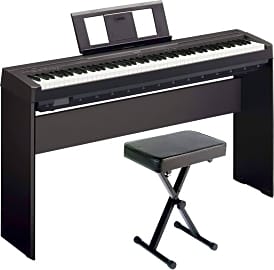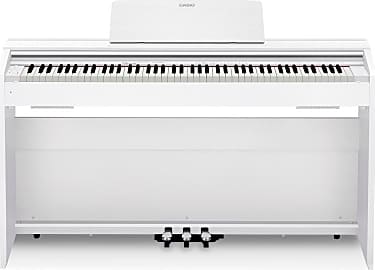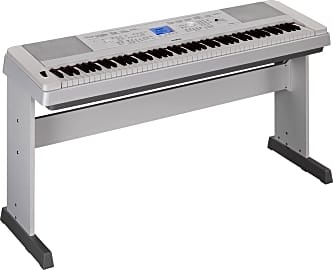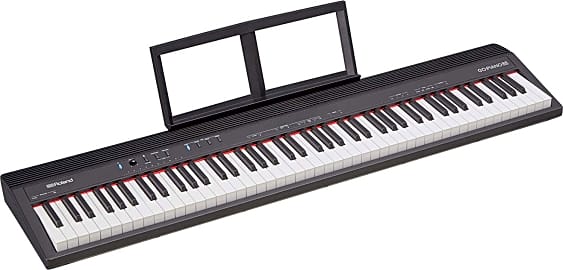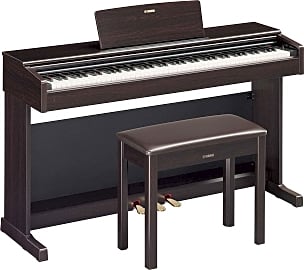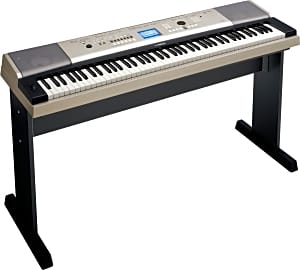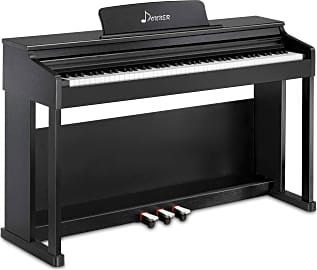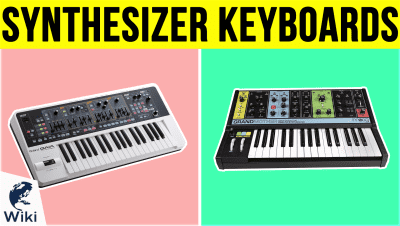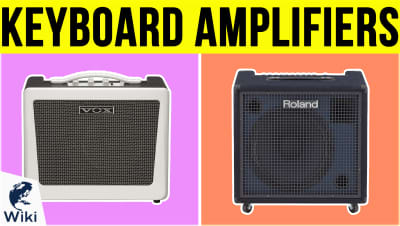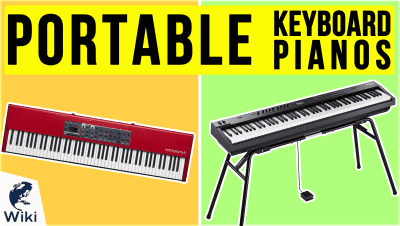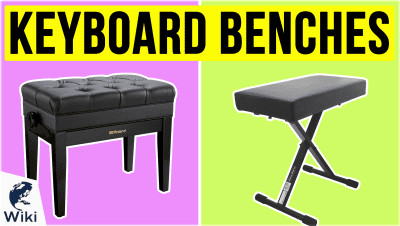The 10 Best Digital Pianos

This wiki has been updated 41 times since it was first published in March of 2015. Today's electric pianos and keyboards offer an incredibly authentic sound in a digital package that can be small enough for the tiniest apartment or dorm room, so you can practice anytime. They also come with a host of features, including lesson software, recording capabilities, Bluetooth compatibility, and headphone jacks, so you can play without disturbing those around you. When users buy our independently chosen editorial selections, we may earn commissions to help fund the Wiki.
Editor's Notes
December 21, 2020:
This latest update sees the introduction of some interesting integrated learning tools on the Roland Go Piano and the One Smart Piano, with the former offering lessons via a connected mobile device, and the latter having LEDs on each key to highlight different finger positions as you play.
At the more affordable end of the scale, we added the Donner DDP-100, which, although limited in its number of sounds, represents great value for money, with fully-weighted keys and solid build quality. Another budget addition is the Yamaha P71, which replaced the Yamaha YDP184R Arius, and is well suited to beginner to intermediate players.
At the more professional end of the scale, we selected the Yamaha DGX660WH, with its extensive soundbank, and the Kawai KDP110, with its excellent craftsmanship, integrated speaker system, and faithful multi-sampled sound reproduction.
November 11, 2019:
Compared to our last visit to this ranking, there were a few things we wanted to make sure were consistent from one offering to the next, most importantly that each piano on the list contained 88 keys. Not all of the models we included offer fully-weighted keys, but each boasts some form of weighting that goes beyond the springy action of a cheap keyboard or even decent synthesizers. You'll also find a lot of common features like included lessons, and even app connectivity, as is the case with the Yamaha Arius Series 144R.
We're also aware that most people shopping for a digital piano are doing so due to considerations of space, but there's no denying that the Suzuki Baby Grand MDG-4000 and the Kurzweil Home KAG100 have more to offer than just about anything else on the list, and they have a considerably larger footprint than the rest of the selection. That space is made use of, however, in the form of excellent speaker systems that take these instruments' sound quality to levels other models couldn't reach without the help of a dedicated piano amplifier.
In making space for these, we removed an old Yamaha option that only offered 76 keys, as well as a Korg model with limited settings and a miserable stand. There was also an update to a popular Yamaha model that resulted in the inclusion of the 144R mentioned above.
There's More To Playing Piano Than "Piano Man"
But pianos weren't immune to market forces, and the Great Depression hit this market particularly hard.
Even if you never played in school orchestra or jazz band, it's very likely that you've sat down at a piano at some point in your life.
Maybe you had a piano at home, and your parents insisted on putting you in piano lessons, or your friend was a decent pianist and tried to help you learn a tune or two. But what you might not realize is that your attempts at a moving rendition of Chopsticks actually put you at the end of a long line of a Western European middle class tradition that starts sometime around Jane Austen.
Don't believe me? Imagine a time before the internet (scary, I know). Imagine a time before phones, before TV and radio, before the invention of the gramophone or even recorded sound. Now let's say you're in London, maybe, or Paris - what is there to do for fun? The answer: play the piano.
For women in particular, playing the piano was not only a socially approved form of entertainment, it was something that might land you a husband. As the social mores of England and France made their way to the United States and Japan, the good citizens of these countries took on the whims of their European counterparts, and a piano revolution was born.
By 1900, pianos were all the rage, especially in the United States. In the first part of the century, roughly 250,000 pianos were made every year. But pianos weren't immune to market forces, and the Great Depression hit this market particularly hard. To make matters worse, the advent of the record player and radio meant that live performance wasn't the only way the middle class could access great music. The market crashed and never fully recovered to its previous levels.
While that might have been the nail in the coffin, advances in electronic music eventually brought the piano back into the limelight with its brand-new cousin, the digital piano. Cheaper, smaller, and lighter than its analog model, it contributed to the declining sale of acoustic pianos, but helped bring the keyboard back to the forefront.
How Do You Get to Carnegie Hall?
You're never going to practice unless you actually have something to practice on, and you want it to be a fun experience. That means choosing a digital piano that you'll actually want to play, but the number of options is overwhelming.
When piano companies create the sounds for their digital pianos, they pick the best sounding acoustic piano they can find. Audio engineers place microphones all around the piano and use the resulting audio files to calibrate the sound of the digital piano. Most often, they'll use a 9-foot concert piano.
Some models will also include all sorts of fun toys like lighted keys to show you which one to push, metronomes, and a display that shows you the chords as you go.
Acoustic pianos (you know, the real thing) almost always have three pedals: the soft pedal, which moves the hammers so that the resulting sound is softer; the sostenuto, which sustains the note you've just played until you release the pedal); and the damper pedal, which will hold all the notes you play after you press it until it's released. Many digital pianos will come with only the damper pedal, and some require you to purchase this piece separately.
Some digital pianos are shaped like a regular upright piano, meaning they are self-contained and do not require any additional parts. Others are sold as just the keyboard itself, meaning that you'll need a stand. Look for an adjustable, yet sturdy model.
Acoustic pianos have a hammer action that gives a feeling of weight or heft to each key as its played. Many digital pianos attempt to replicate this action so that it feels closer to the real thing. Cheaper digital pianos will tend to avoid this feature, but it's well worth it if you plan to play more than once a year.
Note Polyphony refers to the number of notes that can resound at any given time. At a minimum, most digital pianos will create 32-note polyphony, but some of the models out there climb much higher.
Some models will also include all sorts of fun toys like lighted keys to show you which one to push, metronomes, and a display that shows you the chords as you go. Bluetooth connectivity for app-based lessons is also a popular feature.
No Really: Practice, Practice, Practice.
Here's the thing about pianos: they're ubiquitous, so almost everyone has, at some point, sat down and tried to play one. Most people who have had this experience have walked away with one conclusion: playing the piano is HARD.
Sure, you can pluck out an easy tune here and there, but getting your hands to play two different rhythms or notes, and in syncopated time, is a crazy hard thing to do.
So what's the secret? You gotta practice with the best of them. Make it fun! Try learning pieces you really love. Pick out songs from the radio if you can. Find duets to play with your friend (or maybe that cute classmate in your English class).
Mix it up, and make sure that you choose a digital piano that will make you love playing. If you can do that, the work won't feel like work and you'll be playing Herbie Hancock and George Gershwin with the best of them.




